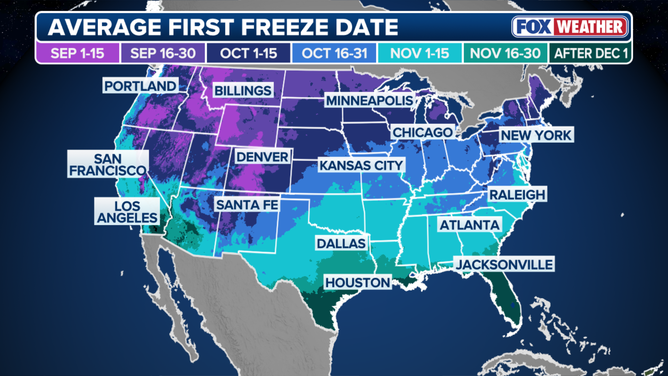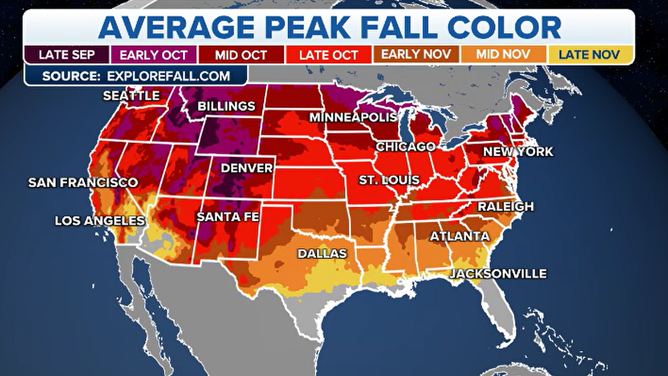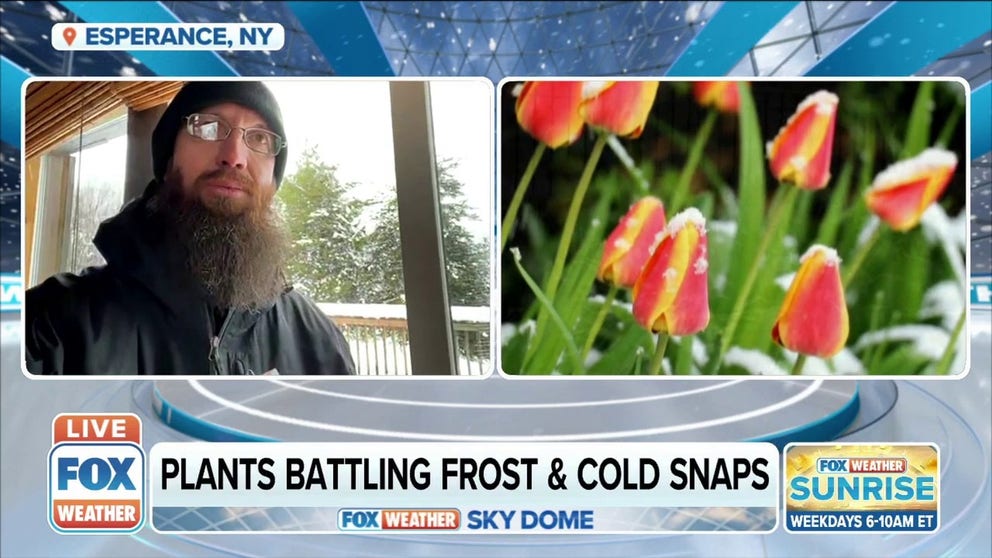Here’s when to expect the first freeze of the season
Average weather conditions over many years provide guidance on when to expect the season’s first 32-degree temperature.
When to expect your first freeze of the season
Here's when you can expect the first freeze of the season in your area.
The first freeze of the season may not be far away for many areas of the U.S.
While we can’t tell you exactly when the season’s first 32-degree temperature will occur at your house, we can give you an idea of when it typically occurs based on average weather conditions over many years.
The map below shows the average date of the first freeze across the Lower 48 states, according to the most recent 30-year climatological averages (1991-2020) from NOAA's National Centers for Environmental Information.
Keep in mind, however, that the weather doesn't always follow what's considered average. A strong cold front could provide the season's first 32-degree or lower temperature days or even weeks earlier than what's shown on the map below. On the other hand, an upper-level area of high pressure that persists into the fall could push the first freeze of the season later than the date indicated on the map.
FARMERS' ALMANAC DECLARES ‘THE BRRR IS BACK’ WITH PREDICTED ‘SNOWY’ WEATHER IN WINTER OUTLOOK

Average first freeze date
(FOX Weather)
Early to mid-September
Early to mid-September is when the first freeze occurs in a typical year for parts of the northern and central Rockies and northern Great Basin. Additionally, areas near the U.S.-Canada border in the northern Plains and Upper Midwest dip to 32 degrees or lower for the first time in mid-September.
The highest mountain peaks in New England and upstate New York – including Maine's Mahoosuc Range, New Hampshire's White Mountains, Vermont's Green Mountains and New York's Adirondack Mountains – also have their first freeze in the middle of September in an average year.
HOW TO WATCH FOX WEATHER ON TV
Early October
Near the start of October, many areas of the West and Midwest see their first freeze in a typical year. This includes portions of the central Plains and High Plains, Upper Midwest and northern Great Lakes.
A swath from New York’s Adirondacks and Catskills to the Appalachians of west-central Pennsylvania and eastern West Virginia also typically dips to 32 degrees or lower in early October.
The season’s first freeze is at the beginning of October for much of New England in an average year as well.
How to best protect your plants from frost during cold snaps
Fred Breglia, Executive Director of the Landis Arboretum and Certified Arborist, discusses how people can best protect their plants from frost during cold snaps.
Mid-October
Most years, a rather large portion of America has its first freeze in the middle of October.
7 WEATHER CHANGES TO EXPECT IN OCTOBER
A 32-degree or lower temperature is typically achieved around mid-October in parts of the Four Corners region, most of the central Plains, portions of the upper and mid-Mississippi Valley, the southern Great Lakes, the Ohio Valley and many of the lower elevations of the Northeast and mid-Atlantic.
In the Southeast, mid-October is when the first freeze occurs in an average year for the Great Smoky Mountains of East Tennessee and western North Carolina, most of West Virginia and the Shenandoah Valley of western Virginia.
Early November
At the beginning of November, portions of southern Oklahoma and western Texas, the mid-South, and the interior Southeast record their first freeze of the season in a typical year.
WHEN CAN YOU EXPECT THE FIRST SNOW OF THE SEASON?

Average peak fall foliage
(FOX Weather)
Mid-November
A mid-November first freeze is considered average for much of the West Coast and Desert Southwest, central and eastern Texas, parts of the lower Mississippi Valley and areas along the northeastern Gulf Coast.
LA NIí‘A WINTER 2022-23 COULD MEAN TORNADO OUTBREAKS, BLIZZARDS AND EVENING IN BETWEEN
December or later
Portions of Southern California, southern and southeastern Texas, southern Louisiana, southeastern Georgia and Florida don’t typically drop to 32 degrees or lower until December or later, but in many years, they may not have a freeze all winter.
Drought, freeze affects Christmas tree production
Don Kazery owner of Kazery Farm talks to FOX Weather's Britta Merwin about how a 50-degree temperature drop impacted the Christmas tree crops in Mississippi.


